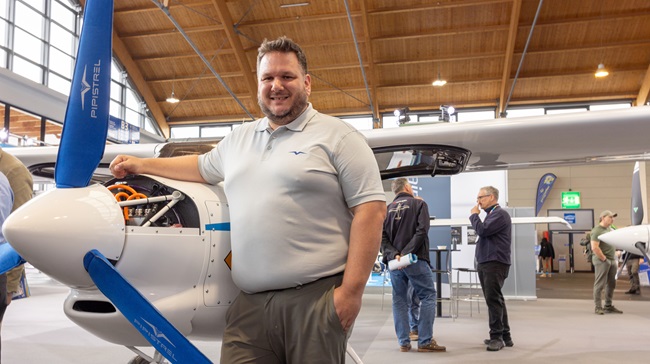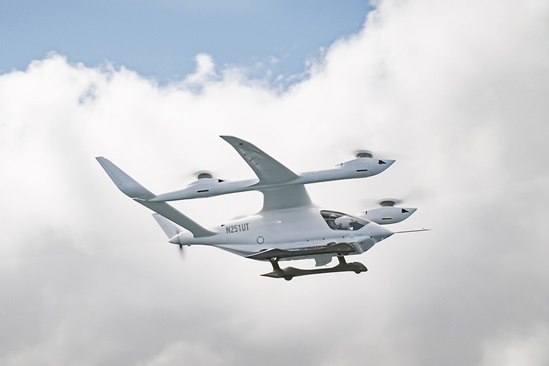Should you be offering drone training?
By Jim Pitman
In March 2017, recode.net reported, “the U.S. Federal Aviation Administration says that more than 770,000 drone owners have registered to fly in U.S. airspace. That’s up from the 670,000 figure FAA chief Michael Huerta shared during his talk at the Consumer Electronics Show in Las Vegas at the start of 2017. It also means that 100,000 drone owners have newly registered with the agency in less than three months. The FAA first opened its drone registration system just over 15 months ago, in December 2015. Only weeks after the registration system started operating, the FAA announced that more than 181,000 drone owners had registered in its database.”
To put this in perspective, the FAA issued fewer than 77,000 U.S. civil pilot certificates in 2016, and there are currently fewer than 600,000 total active U.S. civilian pilots. In other words, this drone thing is big.
“Drone” is a generic term that refers to all types and sizes of unmanned aircraft (UA). A small unmanned aircraft (sUA) weighs between 0.55 and 55 pounds. The FAA defines a small unmanned aircraft system (sUAS) as, “A small unmanned aircraft and its associated elements (including communication links and the components that control the small unmanned aircraft) that are required for the safe and efficient operation of the small unmanned aircraft in the national airspace system.” For the purposes of this article, I’ll simply call them drones.
Sharon McGee is co-owner of Flamingo Air, a Part 141 flight school at Cincinnati Municipal Airport Lunken Field (LUK) in Cincinnati, Ohio. McGee and her team are pioneering a full line of drone training programs. More than 400 clients have completed the school’s Part 107 test prep course since August 2016, and 20 clients have completed a five-day sUAS drone theory and maintenance course so far this year. Those are some serious numbers that represent real opportunity.
When asked to share how this all came about, McGee said, “We recognized the opportunity and decided to go all-in with drone training. Many different industries are beginning to see the value of using drones to accomplish a variety of tasks. They need qualified pilots to fly their drones and technicians to repair them when they break. As far as I know, we are the only flight school currently offering drone pilot and maintenance courses.”
Offering classes to help clients pass the FAA knowledge test (required for commercial drone operations) is a good place to start. The subject matter is very basic and can be taught by any flight or ground instructor. The FAA has organized support materials online that can be used as your training curriculum.
For the drone pilot training and maintenances courses, Flamingo Air was fortunate to have a couple of current employees to help them get started. “We had one gentleman who was really into flying drones and another who understands electronics and is good at fixing things. We pooled our talents and developed the training programs ourselves. It didn’t take long to cross-train other employees, which proved to be a fun process,” McGee said.
Flight schools that do not have this talent in-house should not have to look far. A simple job posting in your area is likely to attract several qualified drone enthusiasts that you can add to your team on a part-time or contractor basis.
Is this type of training required by the FAA? “Currently the FAA only requires a Part 107 remote pilot certificate for commercial sUA operations. The required training can be completed online and the knowledge test can be taken at any approved FAA testing facility. But we’ve found that this is not enough. Companies are investing tens of thousands of dollars in people and equipment and they recognize that they need more than the FAA minimums to be safe and efficient. That’s the opportunity for us and every flight school,” McGee said.
Training is typically performed with small groups of clients who all work for the same company. This provides more efficient use of the instructors’ time and enhances training as the clients interact and learn from each other. Drone clients come from a wide-variety of industries. “We’ve already trained professionals that include police officers, firefighters, real estate agents, home inspectors, roofers, surveyors, wedding photographers, and water/cell tower inspectors. These and other industries are just beginning to discover the many benefits and use-cases for drones in their businesses. They have money that they are already spending and they are eager to reallocate those funds to work more cost effectively with a drone program,” McGee said.
How do these new programs fit with Flamingo’s traditional flight training business? “It’s a very synergistic combination,” McGee said. “We really just had to expand our mindset and definition of flight training to include unmanned aircraft. A few of our current flight students actually became interested in flying the full-scale planes after doing their drone training with us, so it’s an effective way to get new clients in the door as well.”
McGee said the drone courses have helped to even out the flight instructors’ schedules by having them cross-trained on the various courses. The instructors are also able to earn extra income by doing drone flying jobs on the side.
Flamingo Air developed all of its own curriculum. It’s been a lot of hard work, but the flight school is willing to help other flight schools get started with their own drone training programs. “We envision flight schools across the United States and around the world offering drone training. Just this past week we received approval by the government of Japan to provide drone flight training in that country. There is certainly more than enough demand to keep us all busy and we want to help the entire industry any way we can,” McGee said.
Flamingo Air recently hosted a successful AOPA safety seminar that focused on drone operations. Offering seminars like this at your school is another great way to establish your leadership and connect with others in your local drone community. If interested, please contact the AOPA Drone Team by emailing [email protected].
Moving forward, drones are sure to be a significant part of aviation. And you can help shape this new generation of UA pilots and maintenance technicians by offering drone training at your flight school. It’s easier than you might think. After reviewing the information in the links above, I encourage you to take the next step by contacting Tim Marshall, Flamingo Air’s director of drone operations, at [email protected]. Tim is happy to help get you pointed in the right direction. You can also contact Sharon McGee at 513-321-7465 or [email protected].
Pricing and additional information about Flamingo Air’s drone training programs are available on the website.
Jim Pitman has been a flight instructor since 1997. He has been a Part 141 chief flight instructor, Cessna Pilot Center regional manager, and Arizona Flight Instructor of the Year. He flies the Canadair Regional Jet for a U.S. carrier while operating his own flight training business. Connect with Jim at his website.


